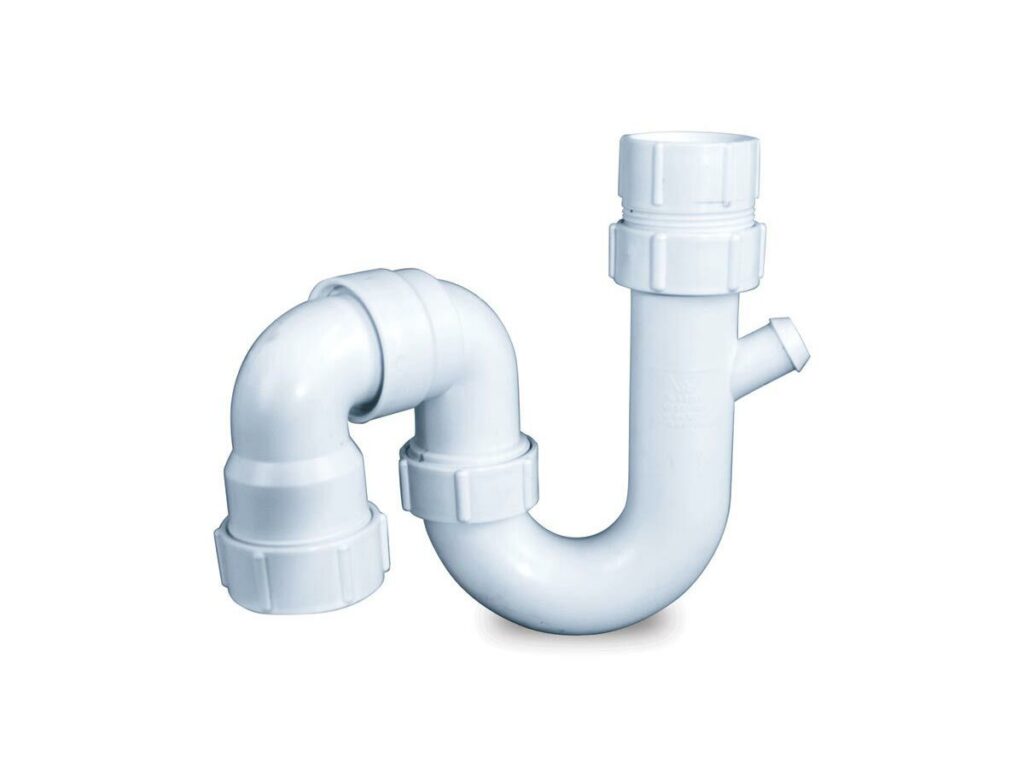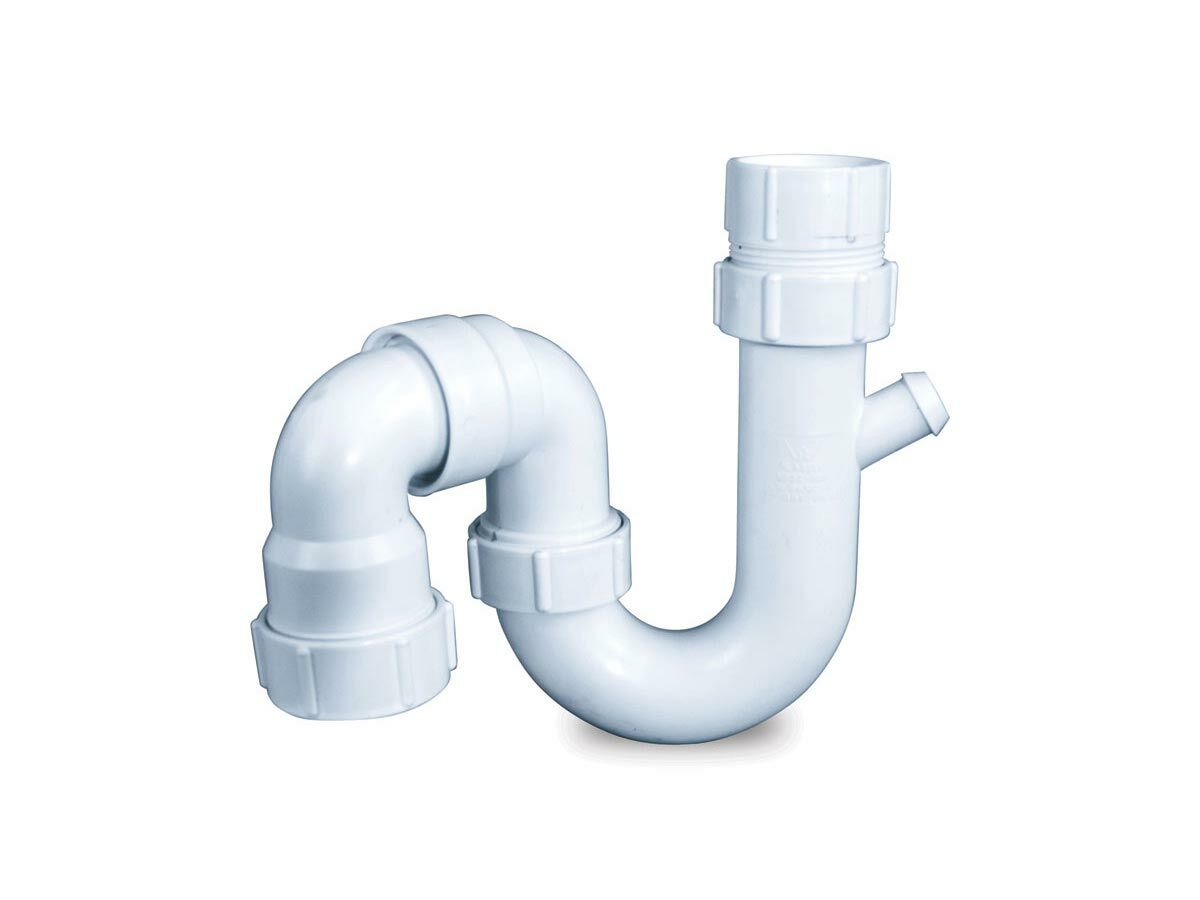
Decoding the Drain: A Comprehensive Guide to PVC P Trap Fittings
In the labyrinthine world of plumbing, certain components play a crucial, often unsung, role in ensuring the smooth and hygienic operation of our homes and businesses. Among these essential elements are the humble yet indispensable PVC P trap fittings. This article delves deep into the intricacies of these fittings, exploring their function, construction, installation, and the myriad reasons why they are vital to any functional plumbing system. From understanding the basics to troubleshooting common issues, this guide provides a comprehensive overview for homeowners, DIY enthusiasts, and plumbing professionals alike.
The Unseen Sentinel: What is a P Trap?
Before diving into the specifics of PVC P trap fittings, it’s crucial to understand the fundamental role of a P trap. Simply put, a P trap is a U-shaped pipe section installed in the drain line of sinks, toilets, showers, and other fixtures. This curved design serves a dual purpose: preventing sewer gases from entering the building and trapping debris that could potentially clog the drain.
The ‘P’ shape is aptly named, as it resembles the letter P when viewed from the side. The bottom curve of the trap always holds a certain amount of water, creating a water seal. This seal acts as a barrier, effectively blocking the noxious and potentially hazardous sewer gases from rising back up through the drain and into the living space. Without this crucial barrier, homes and businesses would be subject to unpleasant odors and the potential health risks associated with sewer gas exposure.
The Advantages of PVC: Why Choose PVC P Trap Fittings?
Polyvinyl chloride, or PVC, has become the material of choice for a wide range of plumbing applications, and PVC P trap fittings are no exception. The popularity of PVC stems from a combination of desirable properties that make it ideally suited for this specific application:
- Durability: PVC is incredibly resistant to corrosion, rust, and degradation, ensuring a long lifespan for your plumbing system. Unlike metal alternatives, PVC will not corrode, even when exposed to harsh chemicals commonly found in household cleaning products.
- Cost-Effectiveness: PVC is a relatively inexpensive material, making PVC P trap fittings a budget-friendly option for both new installations and replacements.
- Ease of Installation: PVC pipes and fittings are lightweight and easy to work with. They can be easily cut, glued, and connected, making installation a straightforward process, even for DIY projects.
- Chemical Resistance: PVC is highly resistant to a wide range of chemicals, including those commonly found in household waste, ensuring that the PVC P trap fittings will not degrade or react with the materials flowing through the drain.
- Smooth Interior: The smooth interior surface of PVC pipes and fittings minimizes friction, allowing for efficient water flow and reducing the likelihood of clogs.
Understanding the Components of a PVC P Trap
A typical PVC P trap fitting consists of several key components:
- The Trap Body: This is the U-shaped section of the trap that holds the water seal. It is the core functional element of the fitting.
- The Inlet: This is the connection point where the trap receives wastewater from the fixture, such as a sink or a toilet.
- The Outlet: This is the connection point where the trap discharges wastewater into the drain line.
- Slip Joints (if applicable): Many PVC P trap fittings utilize slip joints, which are compression fittings that allow for easy removal and maintenance of the trap. These joints typically consist of a nut and a rubber washer, creating a watertight seal.
These components are typically joined together using solvent welding, which creates a permanent, leak-proof connection. Slip joints offer a more flexible approach, allowing for easy disassembly for cleaning or repairs.
Installation: A Step-by-Step Guide to Installing PVC P Trap Fittings
Installing PVC P trap fittings is a relatively straightforward process, but it’s essential to follow the correct procedures to ensure a watertight and functional connection. Here’s a step-by-step guide:
- Gather Your Materials: Before you begin, gather all the necessary materials, including the PVC P trap fitting, PVC pipe, PVC primer, PVC cement, a pipe cutter or saw, and any required tools, such as a tape measure and a level.
- Measure and Cut: Measure the distance between the drain outlet of the fixture and the drain pipe in the wall. Cut the PVC pipe to the appropriate length, ensuring that you have enough space for the trap and any necessary connections.
- Prepare the Connections: Clean the ends of the PVC pipes and the fittings using a PVC primer. This will help to remove any dirt or debris and prepare the surfaces for bonding.
- Apply Cement: Apply a generous amount of PVC cement to both the inside of the fitting and the outside of the pipe.
- Join the Pieces: Immediately insert the pipe into the fitting, twisting it slightly to ensure even distribution of the cement. Hold the connection firmly for a few seconds to allow the cement to set.
- Connect the Trap: Connect the trap body to the inlet and outlet pipes, ensuring that the connections are tight and secure. If using slip joints, tighten the nuts firmly, but avoid over-tightening, which could damage the washers.
- Check for Leaks: Once the cement has fully cured, turn on the water and check for any leaks. If you find any leaks, tighten the connections or reapply the cement as needed.
While this guide provides a general overview, always consult the manufacturer’s instructions for specific installation guidelines for the PVC P trap fitting you are using.
Troubleshooting Common Issues with PVC P Trap Fittings
Even the most well-designed and installed plumbing systems can occasionally experience problems. Here are some common issues that can arise with PVC P trap fittings and how to address them:
- Clogs: Clogs are one of the most frequent issues. They can be caused by a buildup of hair, soap scum, food particles, or other debris. To clear a clog, you can try using a plunger, a drain snake, or disassembling the trap to remove the blockage manually.
- Leaks: Leaks can occur due to loose connections, damaged fittings, or cracked pipes. Tighten any loose connections, replace damaged fittings, or repair cracked pipes as needed.
- Slow Drains: Slow drains can be caused by partial clogs or build-up within the pipes. Try using a drain cleaner, a plunger, or a drain snake to clear the blockage.
- Foul Odors: Foul odors can indicate a problem with the water seal or a build-up of bacteria in the trap. Ensure that the trap is properly sealed and clean it regularly to prevent odors.
If you are unsure about how to resolve a plumbing issue, it’s always best to consult a qualified plumber to avoid causing further damage or risking your safety.
Maintenance and Care: Extending the Life of Your PVC P Trap Fittings
Proper maintenance can significantly extend the lifespan of your PVC P trap fittings and prevent costly repairs. Here are some tips for maintaining your plumbing system:
- Regular Cleaning: Periodically remove and clean the trap to remove any accumulated debris. This is especially important in sinks and showers where hair and soap scum are common.
- Avoid Harsh Chemicals: While PVC is resistant to many chemicals, avoid using harsh drain cleaners that could damage the pipes or fittings over time.
- Flush with Hot Water: After using the sink or shower, flush the drain with hot water to help dissolve any soap scum or grease buildup.
- Inspect Regularly: Periodically inspect the PVC P trap fittings for any signs of leaks, cracks, or damage.
Alternatives to PVC P Trap Fittings
While PVC P trap fittings are the most common choice, other materials and designs are available. These include:
- Metal P Traps: Often made of chrome-plated brass, these offer a more aesthetic look and can be easier to adjust. However, they are more prone to corrosion and are generally more expensive than PVC.
- Flexible P Traps: These are made of corrugated plastic and offer flexibility in installation. However, they are more prone to trapping debris and are less durable than PVC or metal. It is generally not recommended to use a flexible P trap.
The best choice for your application will depend on factors like budget, aesthetic preferences, and the specific requirements of your plumbing system.
The Bottom Line: The Importance of PVC P Trap Fittings
PVC P trap fittings are an indispensable component of any modern plumbing system. They play a critical role in preventing sewer gases from entering your home or business and trapping debris to prevent clogs. Their durability, cost-effectiveness, and ease of installation make them the preferred choice for both homeowners and plumbing professionals.
By understanding the function, installation, and maintenance of these essential fittings, you can ensure the smooth and hygienic operation of your plumbing system for years to come. Whether you’re tackling a DIY project or simply seeking to understand the inner workings of your home, a solid grasp of PVC P trap fittings is a valuable asset.
From understanding the function of a PVC P trap fitting to properly installing it, understanding the details of the PVC P trap fitting is essential for a functional and safe plumbing system. Choosing the right PVC P trap fitting can be an important decision. Replacing a faulty PVC P trap fitting is sometimes necessary. If you’re considering a plumbing project, understanding the role of the PVC P trap fitting is key.
[See also: How to Unclog a Drain Without Chemicals, Understanding Plumbing Codes for DIY Projects, Choosing the Right Drain Cleaner]


